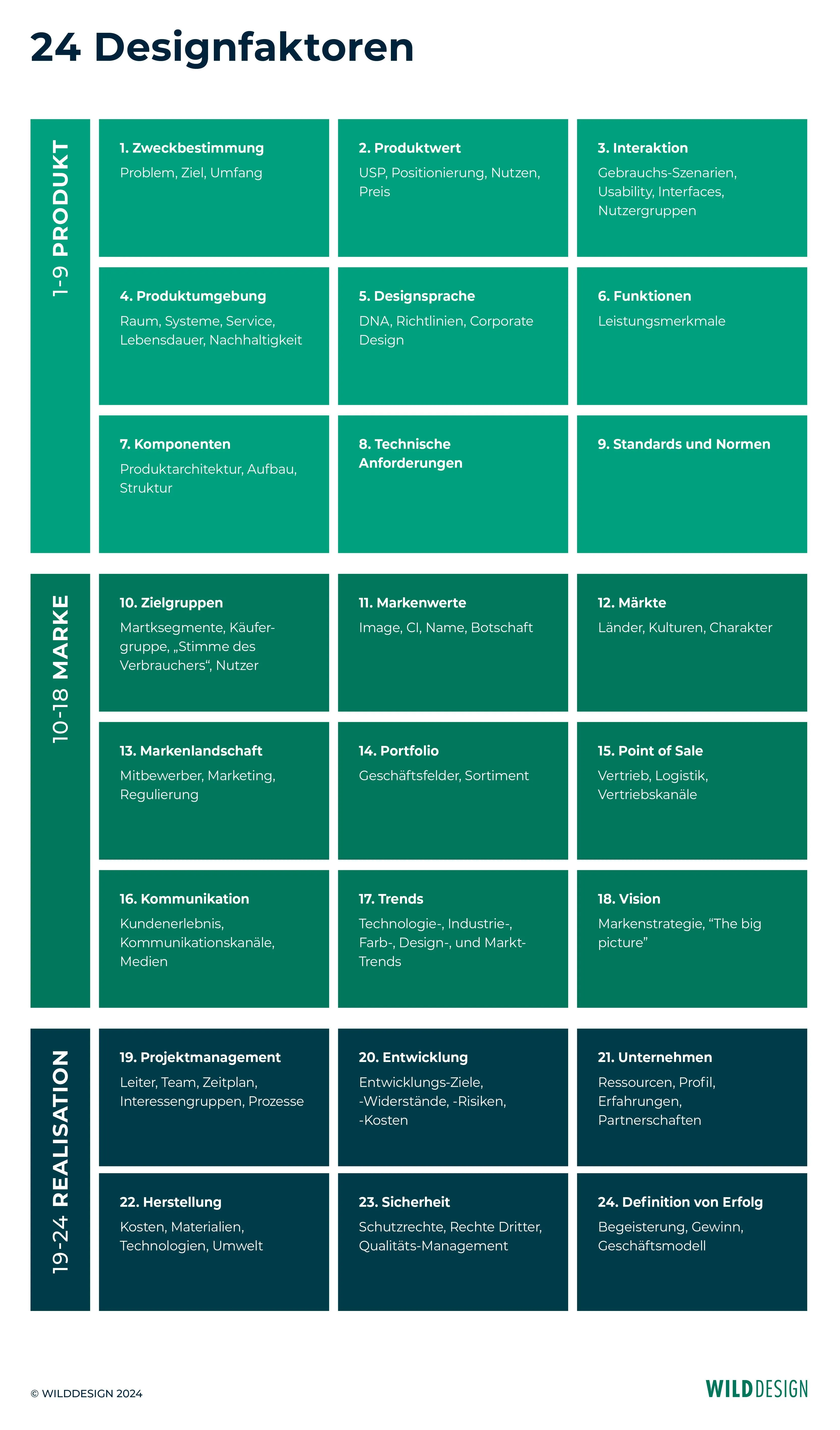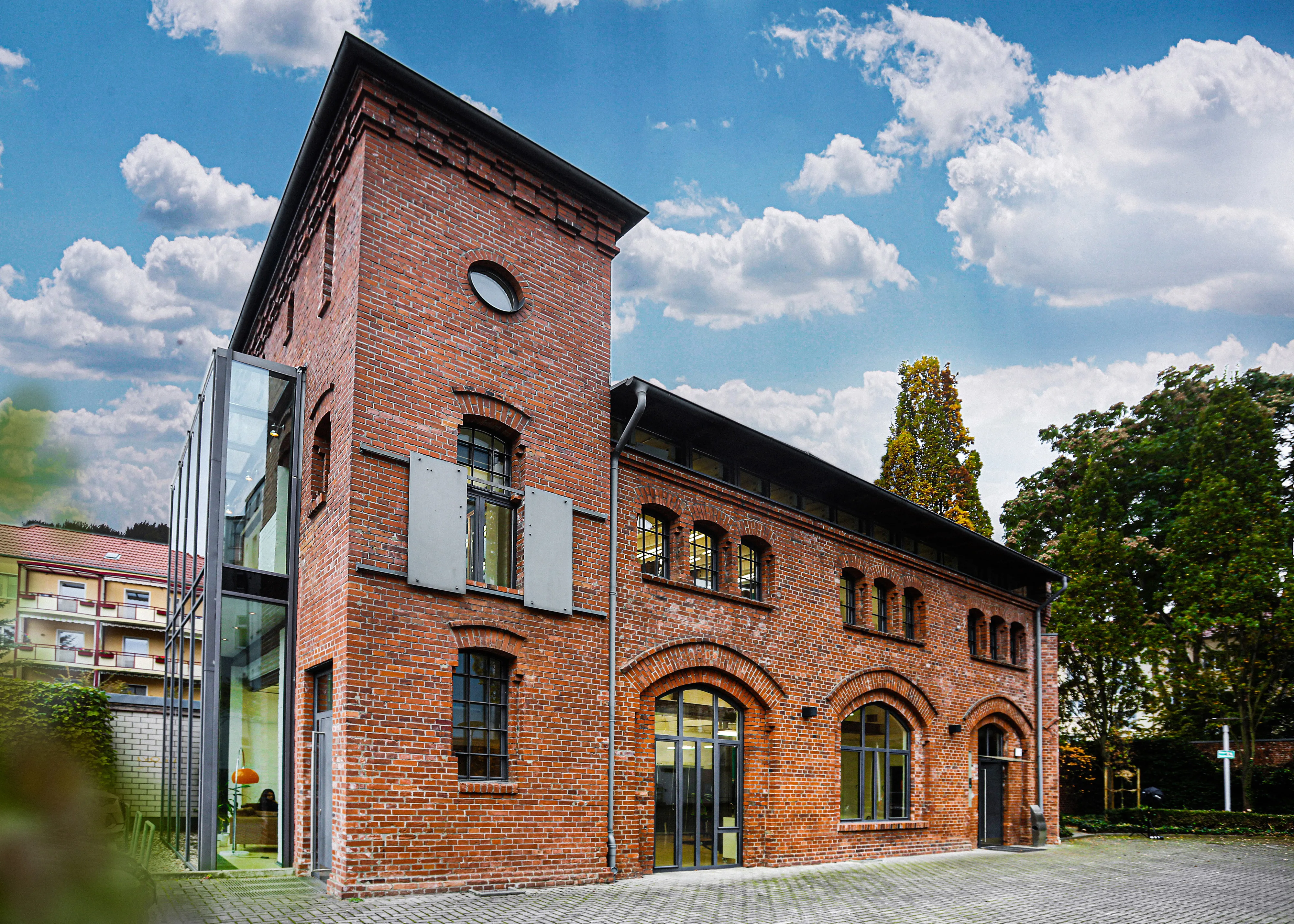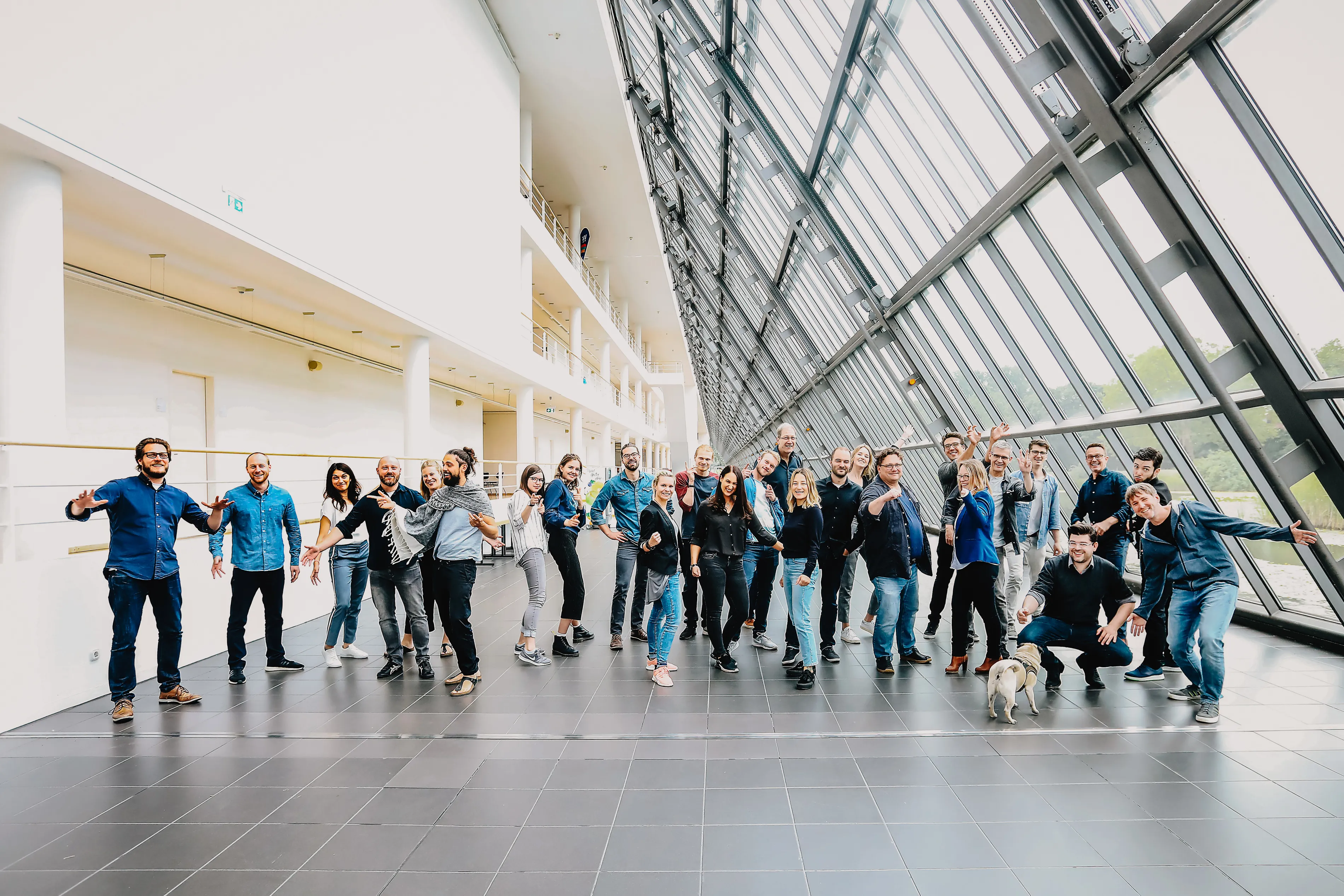24 design factors
A holistic design methodology
Design needs a framework to become a success factor. Efficient development needs design factors. 24 individual topics that we believe belong to a holistic design, arranged according to the headings product (1-9), brand (10-18) and realization (19-24).

The two domains, the product and the brand, form the backbone of the 24 design factors. The third domain is realization, which contains all the questions relating to implementation. If we know the 24 factors, we have grasped the design task and can get the most out of the development.
The 24 design factors are not a process, but a condensed checklist for holistic design. They can be used at any point in the development process to focus or broaden the view, as required. They have a special function in the initial phase of projects, during the briefing. Here, it is important to focus on what is important and not to get lost in the details. In addition, the definition of the task should leave enough room for creativity, prioritisation and flexible handling.
Blog article on the topic
24 Design factors, application in practice
Design factors product
1

Purpose
Problem, goal, scope
Can the purpose be narrowed down precisely, or is it a bundle of different application options?
Is a specific central problem to be solved? Which one?
Can the goal be formulated in one sentence?
2

Product value
USP, positioning, benefit, price
What gives the product its value?
Can a unique selling proposition be named?
In which price segment is it positioned?
Can a price/performance argument be drawn up?
3

Interaction
Usage scenarios, usability, interfaces, user groups
What are the most important interactions with the product?
Which usage and use scenarios can be distinguished?
Are there homogeneous user groups and what is the level of training?
How can operation be simplified?
4

Product environment
Space, systems, service, service life, sustainability
In which typical environment is the product used?
Are there extreme environmental requirements?
Are there disturbances due to the environment?
Is the product integrated into a system?
Is the product life cycle designed? Maintenance, disposal...
What is the expected lifetime of the product?
5

Design language
DNA, Guidelines, Corporate Design
Is there a design framework into which the product should fit?
Are there design guidelines?
Does the application area or purpose dictate a particular design language?
Are there archetypes in the product area?
6

Functions
Performance features
What are the main functions that the product must fulfill?
What features/performance characteristics are expected or assumed?
Is it possible to reduce the variety of functions in order to increase the (use) value of the product?
7

Components
Product architecture, design, structure
Which are the most important components?
In which structure are they arranged? What are the main reasons for this arrangement?
What interactions/interferences exist between the components?
Is there a prescribed product architecture?
Are components/assemblies adopted from other products?
8

Techn. requirements
What are the MUST requirements?
What are the SHOULD requirements?
What is "nice to have"?
How firm are the specifications at this point in time?
How high is the risk that specifications will change at a later point in time?
9

Standards and norms
Which standards or regulations must the product comply with?
Which areas of the product are regulated?
Is it a medical device, for example?
Is the product to comply with extended standards at a later date? (e.g. other country-specific standards)
1

Purpose
Problem, goal, scope
Can the purpose be narrowed down precisely, or is it a bundle of different application options?
Is a specific central problem to be solved? Which one?
Can the goal be formulated in one sentence?
2

Product value
USP, positioning, benefit, price
What gives the product its value?
Can a unique selling proposition be named?
In which price segment is it positioned?
Can a price/performance argument be drawn up?
3

Interaction
Usage scenarios, usability, interfaces, user groups
What are the most important interactions with the product?
Which usage and use scenarios can be distinguished?
Are there homogeneous user groups and what is the level of training?
How can operation be simplified?
4

Product environment
Space, systems, service, service life, sustainability
In which typical environment is the product used?
Are there extreme environmental requirements?
Are there disturbances due to the environment?
Is the product integrated into a system?
Is the product life cycle designed? Maintenance, disposal...
What is the expected lifetime of the product?
5

Design language
DNA, Guidelines, Corporate Design
Is there a design framework into which the product should fit?
Are there design guidelines?
Does the application area or purpose dictate a particular design language?
Are there archetypes in the product area?
6

Functions
Performance features
What are the main functions that the product must fulfill?
What features/performance characteristics are expected or assumed?
Is it possible to reduce the variety of functions in order to increase the (use) value of the product?
7

Components
Product architecture, design, structure
Which are the most important components?
In which structure are they arranged? What are the main reasons for this arrangement?
What interactions/interferences exist between the components?
Is there a prescribed product architecture?
Are components/assemblies adopted from other products?
8

Techn. requirements
What are the MUST requirements?
What are the SHOULD requirements?
What is "nice to have"?
How firm are the specifications at this point in time?
How high is the risk that specifications will change at a later point in time?
9

Standards and norms
Which standards or regulations must the product comply with?
Which areas of the product are regulated?
Is it a medical device, for example?
Is the product to comply with extended standards at a later date? (e.g. other country-specific standards)
Design factors brand
10

Target groups
Market segments, buyer group, "voice of the consumer", users
What are the main user groups? (3)
In which market segments does the product play?
How important is the consumer/user? Does he have a voice?
Who buys the product?
How important is a recommendation of the product?
11

Brand values
Image, CI, Name, Message
What is the brand message behind the product? What supports it?
Can you tell a story?
Is the name appropriate to the brand?
What value does the product have without a brand?
12

Markets
Countries, Cultures, Character
In which markets is the product sold?
Does the product or brand need to be "translated"?
Are there cultural specifics and preferences?
Are culture- or country-specific adaptations planned?
13

Brand landscape
Competitor, marketing, regulation
Which are the leading brands and products in the relevant market?
How can the market profile in the price segments be described?
How do WE compare to the competition?
What marketing strategy should the product use to establish itself?
Are there any regulations in the market?
14

Portfolio
Business areas, assortment
Does the product stand alone, or is there a product range?
In which business areas is the brand active?
Do the sales channels match the expected sales?
15

Point of Sale
Distribution, logistics, sales channels
What are the most important sales channels?
Where can the product be purchased?
What role does the shopping environment play?
What role does the shopping experience play?
What logistics need to be in place to distribute the product?
Do the sales channels match the expected sales?
16

Communication
Customer experience, communication channels, media
What channels should the brand use to communicate with customers?
What media are used to in the market?
In what media can the brand communicate effectively?
How important is the experience with the brand and the product?
Can the interaction/service be made a positive experience?
17

Trends
Technology, industry, color, design, and market trends
How does the product/brand relate to the major megatrends?
Is the brand/product boosted or hindered by trends?
Are there specific trends in the product field that need to be taken into account?
Are there seasonal effects?
18

Vision
Brand strategy, "The big picture
What is the brand's long-term aspiration?
Compared to competitors?
Is there a formulated vision for 5 and 10 years?
10

Target groups
Market segments, buyer group, "voice of the consumer", users
What are the main user groups? (3)
In which market segments does the product play?
How important is the consumer/user? Does he have a voice?
Who buys the product?
How important is a recommendation of the product?
11

Brand values
Image, CI, Name, Message
What is the brand message behind the product? What supports it?
Can you tell a story?
Is the name appropriate to the brand?
What value does the product have without a brand?
12

Markets
Countries, Cultures, Character
In which markets is the product sold?
Does the product or brand need to be "translated"?
Are there cultural specifics and preferences?
Are culture- or country-specific adaptations planned?
13

Brand landscape
Competitor, marketing, regulation
Which are the leading brands and products in the relevant market?
How can the market profile in the price segments be described?
How do WE compare to the competition?
What marketing strategy should the product use to establish itself?
Are there any regulations in the market?
14

Portfolio
Business areas, assortment
Does the product stand alone, or is there a product range?
In which business areas is the brand active?
Do the sales channels match the expected sales?
15

Point of Sale
Distribution, logistics, sales channels
What are the most important sales channels?
Where can the product be purchased?
What role does the shopping environment play?
What role does the shopping experience play?
What logistics need to be in place to distribute the product?
Do the sales channels match the expected sales?
16

Communication
Customer experience, communication channels, media
What channels should the brand use to communicate with customers?
What media are used to in the market?
In what media can the brand communicate effectively?
How important is the experience with the brand and the product?
Can the interaction/service be made a positive experience?
17

Trends
Technology, industry, color, design, and market trends
How does the product/brand relate to the major megatrends?
Is the brand/product boosted or hindered by trends?
Are there specific trends in the product field that need to be taken into account?
Are there seasonal effects?
18

Standards and norms
Brand strategy, "The big picture
What is the brand's long-term aspiration?
Compared to competitors?
Is there a formulated vision for 5 and 10 years?
Design factors realization
19

Project Management
Leader, team, schedule, stakeholders, processes
Which internal interest groups (stakeholders) can be distinguished?
What is the management structure in this project?
Who makes decisions during development?
Do processes exist or must processes be followed?
What are the rough milestones for development?
20

Development
Development goals, resistances, risks, costs
What development goals have been formulated?
Can resistance be identified?
What development risks are known?
What cost framework / structure is expected?
21

Company
Resources, profile, experience, partnerships
Which resources can / should be used?
Are the competences sufficient in all required areas?
In which areas are there deficits?
Where do new resources have to be found or created?
Which partnerships exist and have to / can be considered?
22

Production
Costs, materials, technologies, environment
How can the manufacturing process be roughly described?
Who is the manufacturer?
How are the unit costs and the end-user price estimated?
What materials are to be used?
What environmental requirements are to be taken into account?
23

Security
Property rights, third-party rights, quality management
Who is responsible for quality?
How important is safety for the product?
Can unique selling propositions be protected?
Do the company's own property rights exist?
Where could the rights of third parties be infringed?
How would a "safe product" be described here?
24

Definition of success
Enthusiasm, profit, business model
How is success defined in our case?
Is a design award a measure of success?
What are the excitement factors in the project?
What profits are hoped for from the development?
What is the business model behind the development (brand building, licensing....)?
19

Project Management
Leader, team, schedule, stakeholders, processes
Which internal interest groups (stakeholders) can be distinguished?
What is the management structure in this project?
Who makes decisions during development?
Do processes exist or must processes be followed?
What are the rough milestones for development?
20

Development
Development goals, resistances, risks, costs
What development goals have been formulated?
Can resistance be identified?
What development risks are known?
What cost framework / structure is expected?
21

Company
Resources, profile, experience, partnerships
Which resources can / should be used?
Are the competences sufficient in all required areas?
In which areas are there deficits?
Where do new resources have to be found or created?
Which partnerships exist and have to / can be considered?
22

Production
Costs, materials, technologies, environment
How can the manufacturing process be roughly described?
Who is the manufacturer?
How are the unit costs and the end-user price estimated?
What materials are to be used?
What environmental requirements are to be taken into account?
23

Security
Property rights, third-party rights, quality management
Who is responsible for quality?
How important is safety for the product?
Can unique selling propositions be protected?
Do the company's own property rights exist?
Where could the rights of third parties be infringed?
How would a "safe product" be described here?
24

Definition of success
Enthusiasm, profit, business model
How is success defined in our case?
Is a design award a measure of success?
What are the excitement factors in the project?
What profits are hoped for from the development?
What is the business model behind the development (brand building, licensing....)?



-Website.webp)
